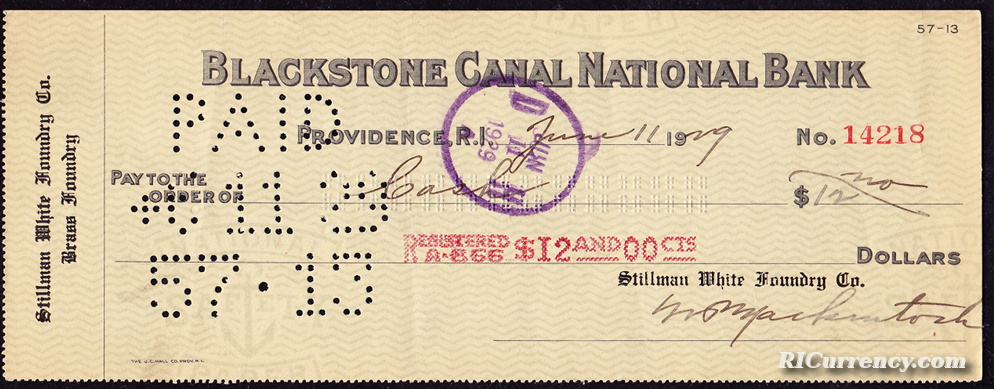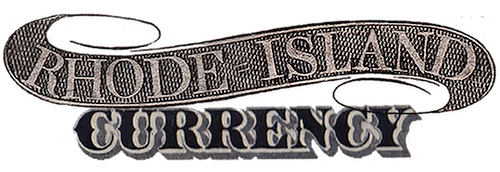Blackstone Canal Bank, Providence
The Blackstone Canal Bank was organized in 1831 by some of Providence’s most prominent businessmen, including members of the Brown and Ives families. Its purpose was to infuse much-needed capital into the newly-constructed Blackstone Canal. The waterway project, which ran 45 miles from Providence to Worcester, had cost much more than the $400,000 originally projected and its toll receipts were low.
Initially, half of the bank’s $250,000 capitalization was to be invested in the stock of the canal and canal stockholders were given the privilege of investing in the bank. However, by 1833 the bank began distancing itself from its financially-stricken partner and in 1834, the financial institution was given permission by the General Assembly to sell off its shares of canal stock.
Nicholas Brown, son of John Brown, served as the institution’s first president and Thomas B. Fenner was cashier (he had previously served in that position at the Eagle Bank). In 1841, John Carter Brown succeeded his father as president.
In 1836, the bank moved into the former offices of the Bank of the United States in Providence. In 1850, the bank moved into a newly constructed edifice at 20 Market Square known as the What Cheer building. Some of the structure’s foundation stones were taken from the canal itself. It appears that the bank occupied this address for the rest of its existence (records show it at this location to at least the 1930s, although it’s also listed at 25 Market Square, a ground floor space in the same building where the American Bank was once located).
In 1865, the institution was granted federal charter #1328 and was reorganized as the Blackstone Canal National Bank. During its existence, it issued $12,372,120 in national banknotes, from $1 to $500 bills. 224 of these notes are recorded in the National Bank Note Census today.
An excellent profile of the bank, written by Bob Cochran, appeared in the May/June, 1995 issue of Paper Money, entitled, “Blackstone National Bank of Providence, RI.”
Additional notes from the bank’s timeline:
• The Blackstone River and like-named entities were named after William Blaxton, one of the first white settlers of New England.
• A circular letter from January 18, 1831, announcing the granting of the bank’s charter, is in the collection of the John Carter Brown Library at Brown University.
• Noted in 1892: “The Blackstone Canal National is a bank of issue, deposit and discount; negotiating loans, handling first-class commercial paper, buying and selling exchange, issuing sight drafts on all the principal cities of the Union, making telegraphic transfers of money, granting letters of credit, and making collections on all available points through its numerous correspondents, who include the National Park Bank and the Mercantile National Bank, of New York; and the First National Bank, of Boston.” — Industries and Wealth of the Principal Points in Rhode Island, being the city of Providence, Pawtucket, Central Falls, Woonsocket, Newport, Narragansett Pier, Bristol & Westerly. New York: A. F. Parsons Publishing Co., 1892.
• April 18, 1895, the Manufacturers and Farmers Journal warned that counterfeit $5 on the bank had been passed at saloons in Providence.
• September 26, 1945: Stockholders of the Blackstone Canal National Bank and the Providence National Bank agreed to a merger, effective October 10, 1945. Their collective resources were over $67,000,000.










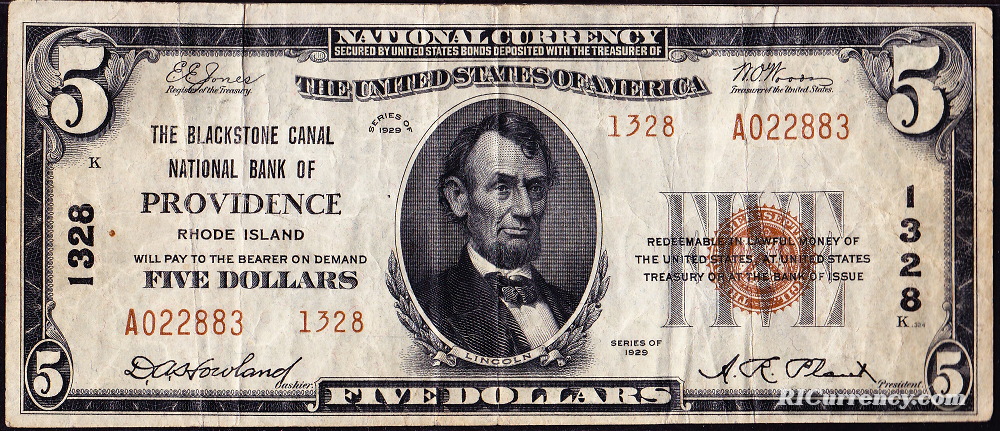
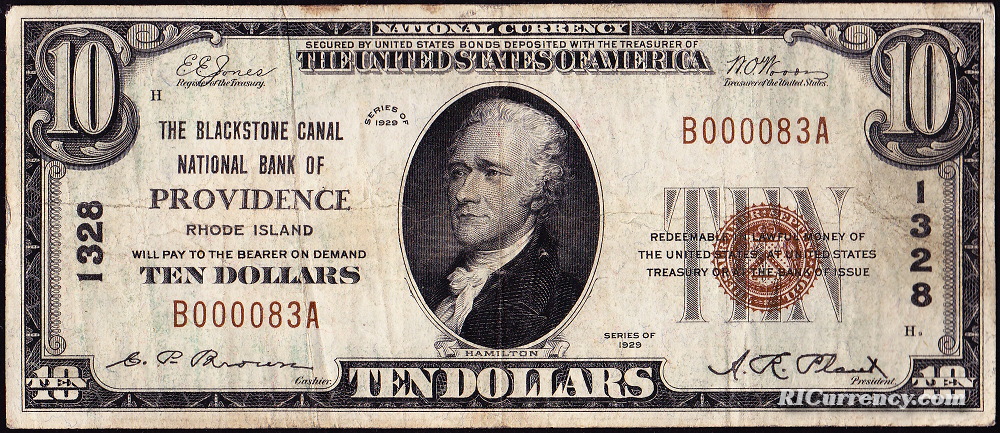
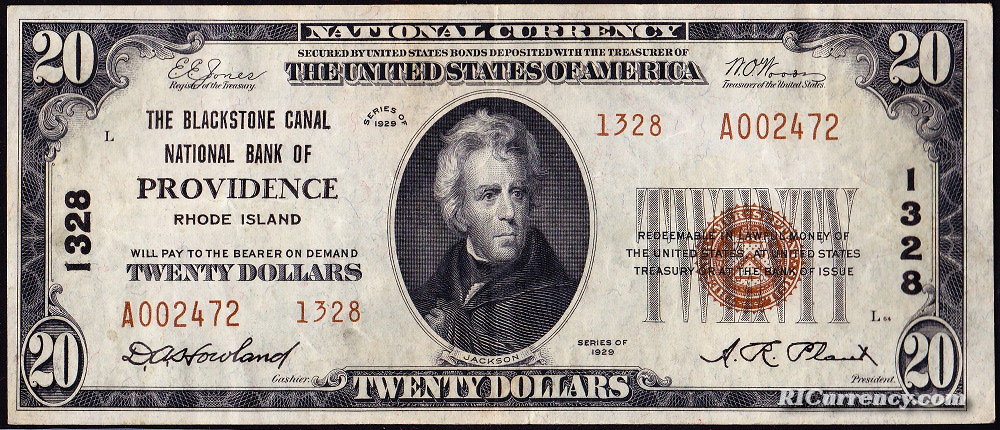
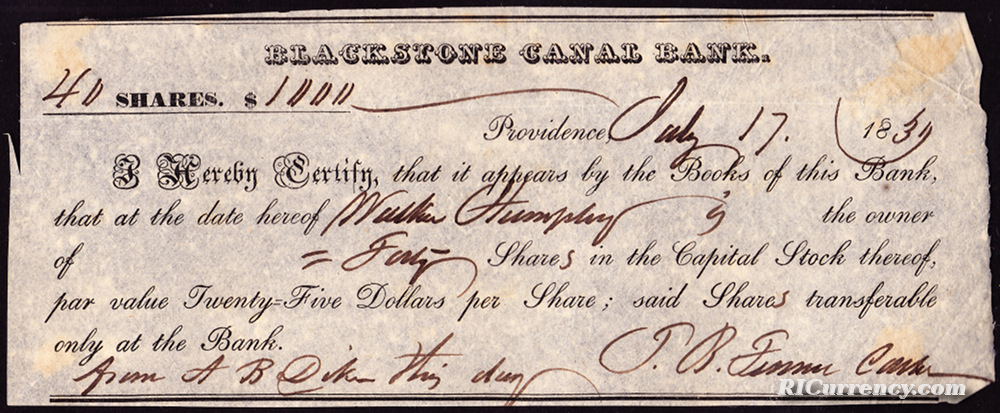
Walker Humphrey’s stock certificate from 1834 for 40 shares. Signed by T.B. Fenner, the bank’s cashier.
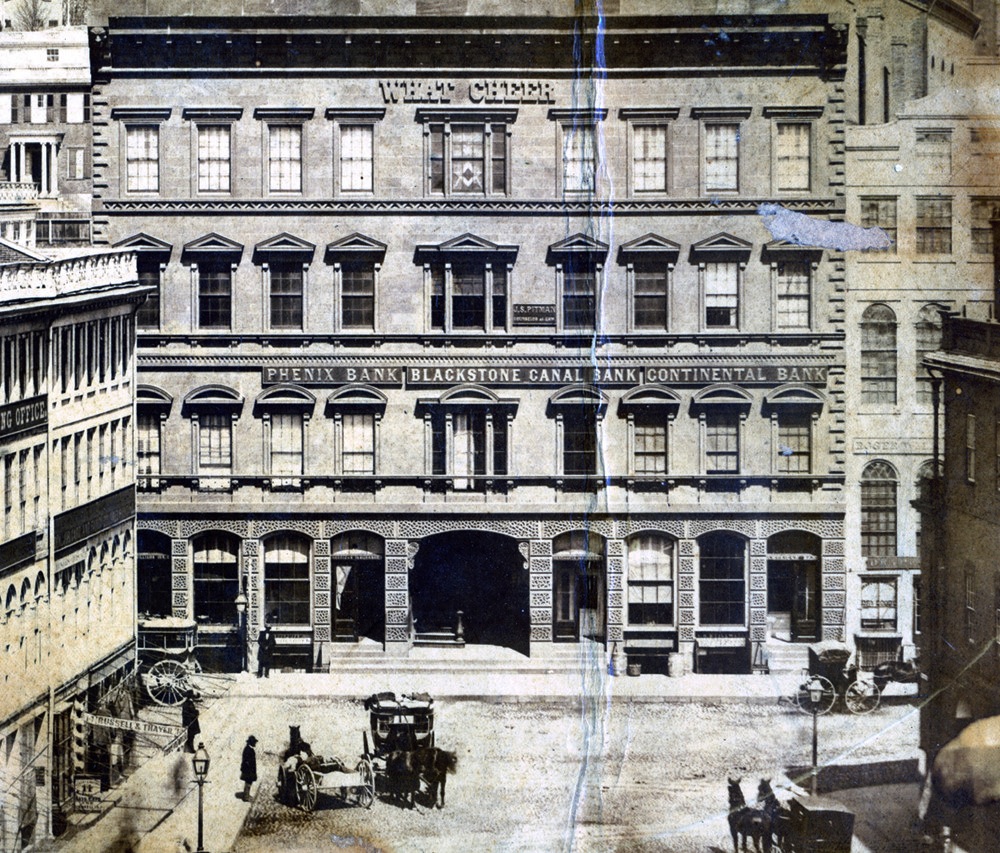
Office of the Blackstone Canal Bank in Market Square. Also home to the Continental Bank and the Phenix Bank.
What Cheer building, South Main Street, Providence, WC 0191. Rhode Island Collection, Providence Public Library, Providence, R.I. Reprinted with permission.
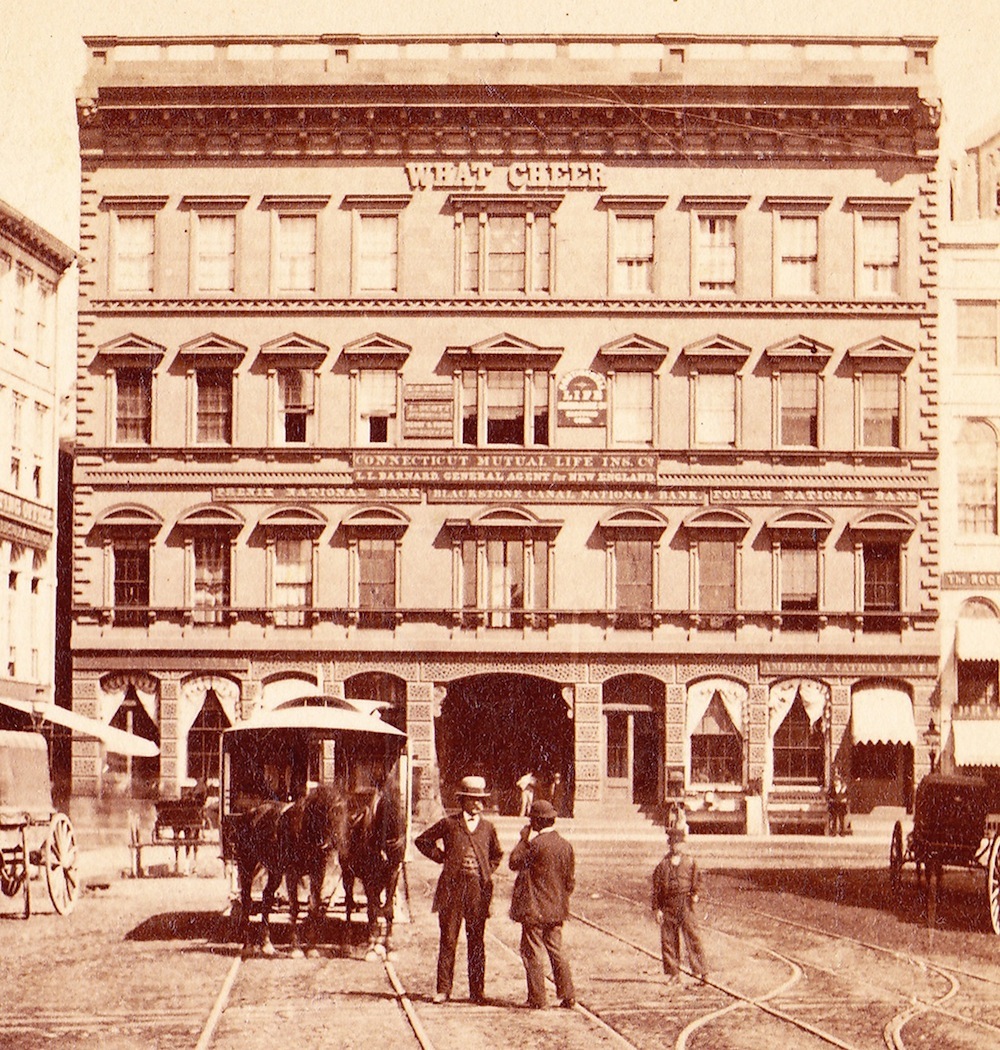
The What Cheer Building at the dawn of the national banking era. Home to the Blackstone Canal National Bank, the Phenix National Bank, the Fourth National Bank, the American National Bank and the Connecticut Mutual Life Insurance Company. The Roger Williams National Bank and the Globe National Bank were in the building adjacent to the right. (Rhode Island School of Design’s Chace Center now occupies this site on North Main Street.)
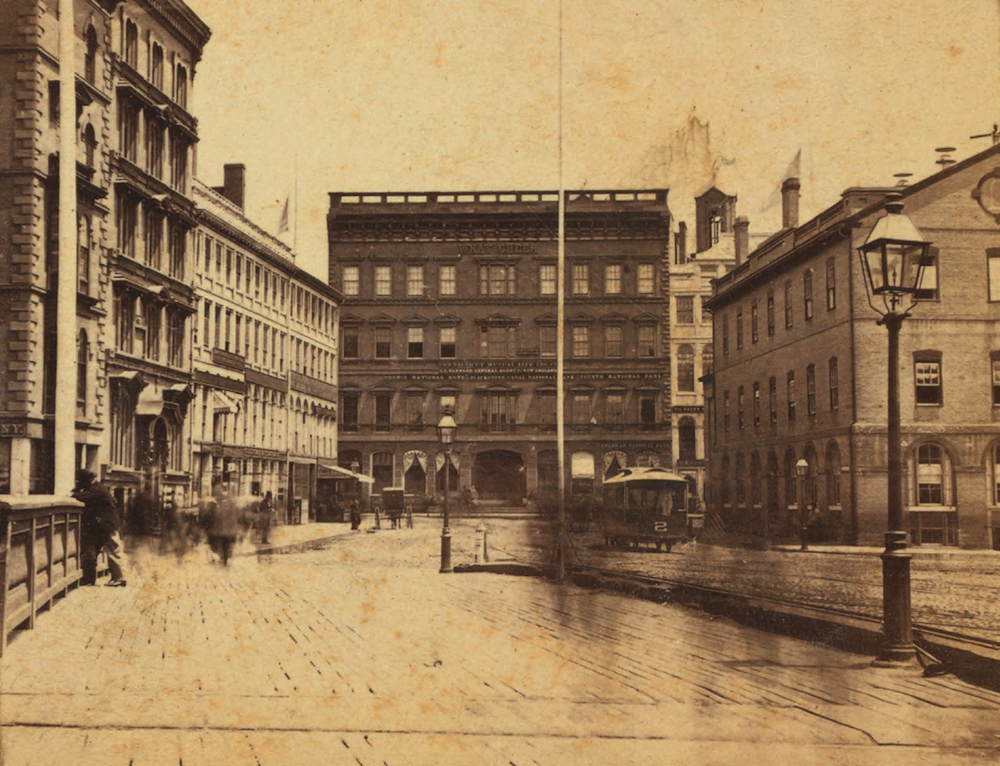
A wider view of Market Square in the late 19th century (Source: Wikipedia.)
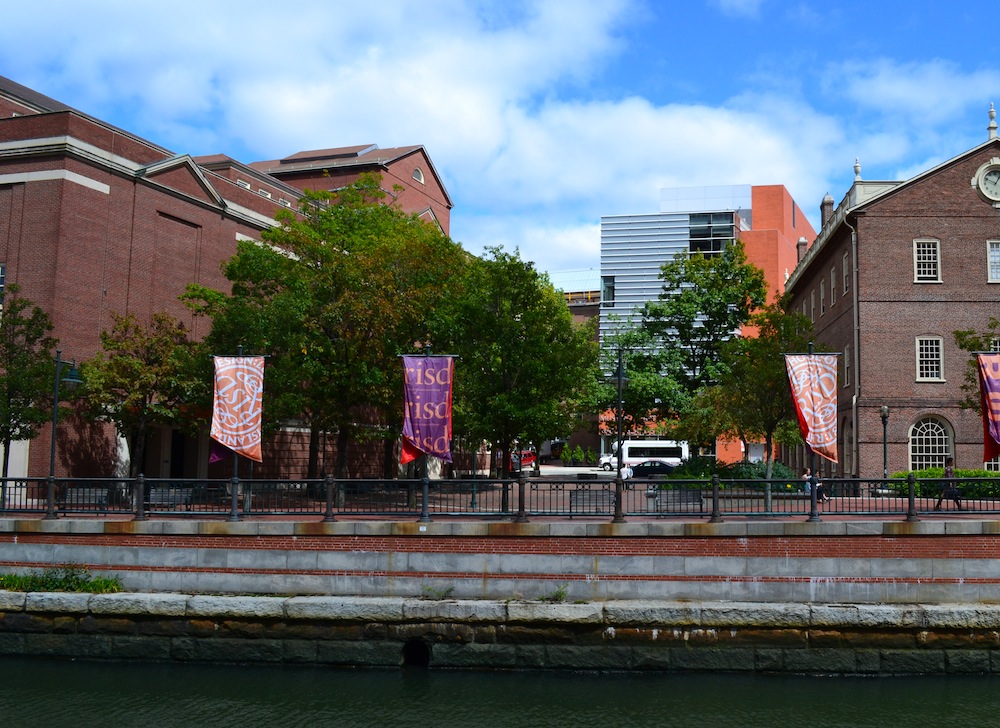
Market Square today. At some point after WWII, the What Cheer Building was torn down and the location used as a parking lot. In 2008, the Rhode Island School of Design opened up the Chace Center, designed by Spanish architect Jose Rafael Moneo, on the former site of the What Cheer Building.
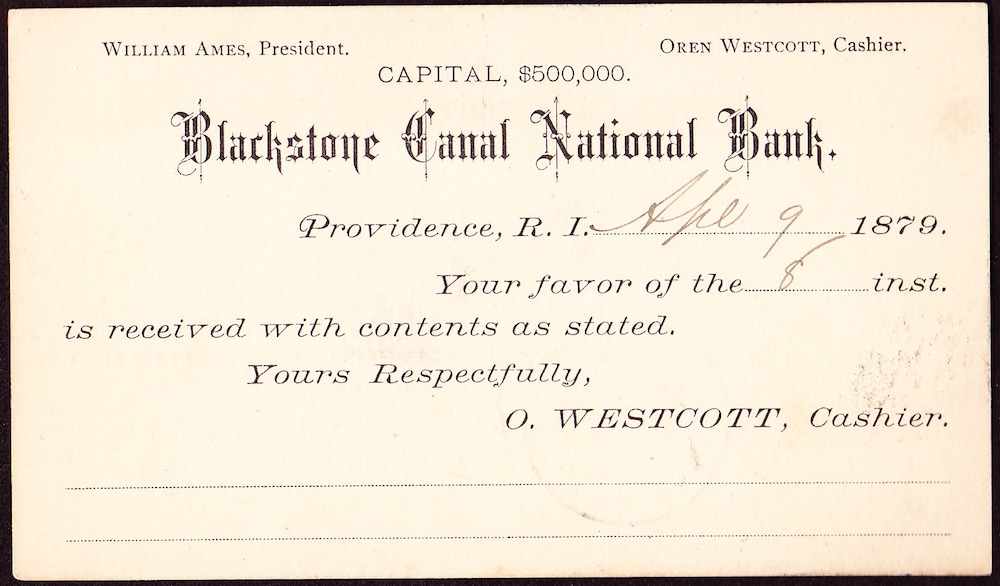
A card sent to the State Bank of Baldwinsville, NY, on April 9, 1879 from Oren Westcott, cashier.
